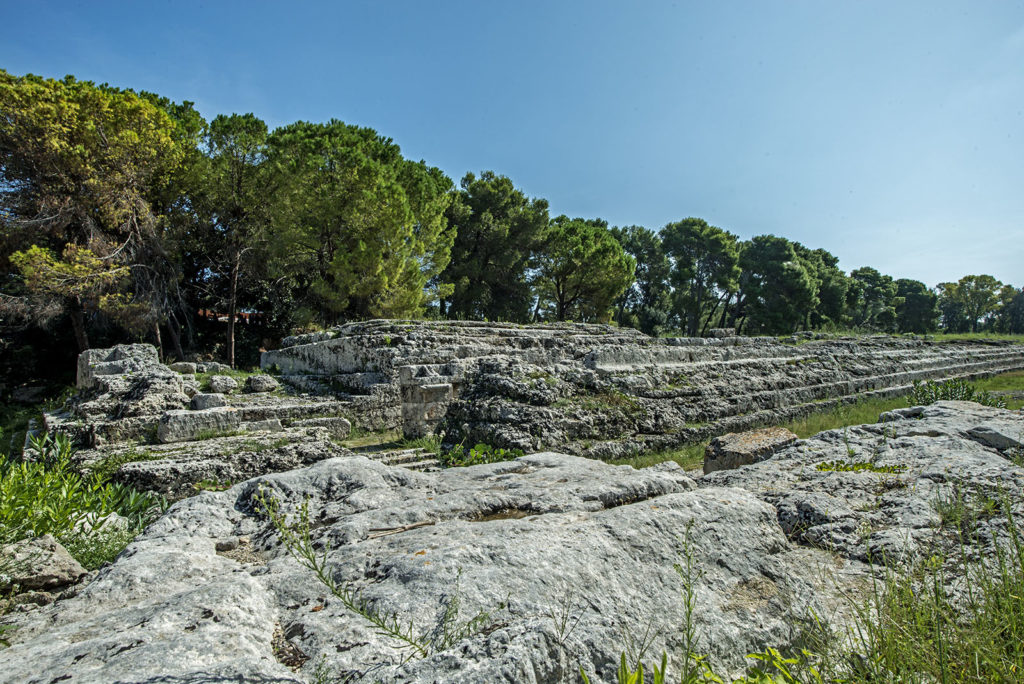The fire element in Neàpolis had a close link to the religious rites of the Greeks, i.e. sacrifices to the gods. The Altar of Hieron was the most famous altar in the ancient world. It was named after Hiero II, the sovereign who had it built near the Greek theatre.
 The altar was 198 metres long, like a modern football stadium, and was dedicated to Zeus, the god of power and order. Two flights of stairs were used to reach a mezzanine floor. During ceremonies, citizens would climb up one flight and descend using the opposite one, but only after leaving an offering to the gods. On either side of the two entrances to the stairs, there were two male statues that supported and embellished the entrances. These sculptures are called
telamons
The altar was 198 metres long, like a modern football stadium, and was dedicated to Zeus, the god of power and order. Two flights of stairs were used to reach a mezzanine floor. During ceremonies, citizens would climb up one flight and descend using the opposite one, but only after leaving an offering to the gods. On either side of the two entrances to the stairs, there were two male statues that supported and embellished the entrances. These sculptures are called
telamons
.
All that’s left today are the feet of one telamon.
In Greek religion, sacrifices to the gods played a very important role. In fact, to gain the favour of the gods, the Greeks offered up animals as sacrifices: goats, sheep or oxen. Before any undertaking they consulted an
oracle
, i.e. a priest or priestess who spoke on behalf of the god.